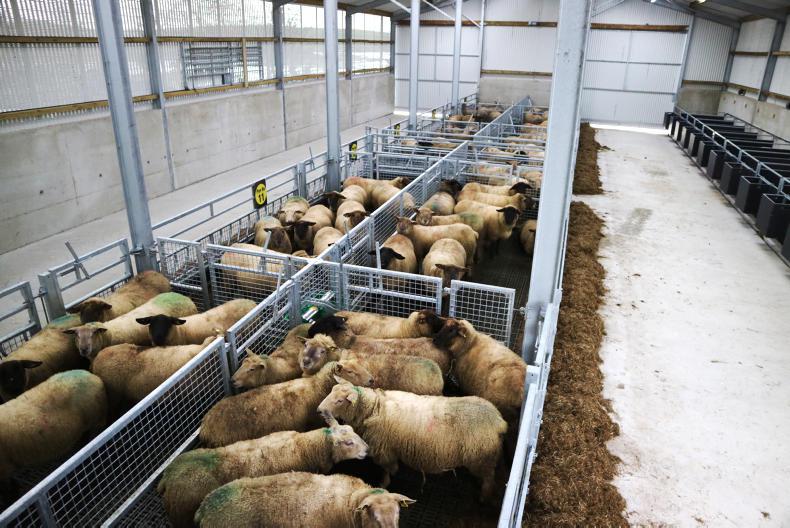OOne disease that often crops up in flocks at this time of year is coccidiosis. It is caused by an Eimeria parasite.
The main symptoms are black or bloody diarrhoea. Lambs will also show a little weight loss or ill thrift. Coccidiosis can quickly be confirmed by sending a faecal sample to your vet for analysis.
The main source of the disease is often the ewe or faecal contamination of the surroundings. Once infected, the lamb will usually not show signs for 15-20 days. It typically affects lambs at four to 10 weeks of age. Where there is a history of the disease, or where there is an outbreak, it is essential to power-wash all lambing pens after use and to disinfect them to reduce the risk of spread.
A full list of licensed products that treat Coccidiosis is shown in Table 1. As this table was produced in 2017 by Teagasc, it is important to consult your vet when buying a product.
As pointed out earlier, hygiene is essential in avoiding the spread or an outbreak of coccidiosis. As the oocysts are highly infectious and somewhat resistant to disinfectants, it is essential that lambing houses are cleaned, disinfected and left free of stock well in advance of lambing. Ensuring pens are well bedded is crucial.
Key points to reducing the risk of a coccidiosis outbreak:
Bed pens daily with fresh clean straw to keep pens clean.Use gloves and practise high levels of hygiene when handling ewes and lambs.Do not overstock pens as bedding will get dirty quicker.Clean pens between batches of ewes and lambs to control the spread of the disease.Segregate and quarantine ewes and lambs showing signs of infection.Move ewes and lambs out to fresh pasture as soon as possible.Avoid placing young lambs in the same pasture that was used for finishing lambs with creep feedersLeaking drinkers or wet bedding can be a risk factor for the build up of the disease.
OOne disease that often crops up in flocks at this time of year is coccidiosis. It is caused by an Eimeria parasite.
The main symptoms are black or bloody diarrhoea. Lambs will also show a little weight loss or ill thrift. Coccidiosis can quickly be confirmed by sending a faecal sample to your vet for analysis.
The main source of the disease is often the ewe or faecal contamination of the surroundings. Once infected, the lamb will usually not show signs for 15-20 days. It typically affects lambs at four to 10 weeks of age. Where there is a history of the disease, or where there is an outbreak, it is essential to power-wash all lambing pens after use and to disinfect them to reduce the risk of spread.
A full list of licensed products that treat Coccidiosis is shown in Table 1. As this table was produced in 2017 by Teagasc, it is important to consult your vet when buying a product.
As pointed out earlier, hygiene is essential in avoiding the spread or an outbreak of coccidiosis. As the oocysts are highly infectious and somewhat resistant to disinfectants, it is essential that lambing houses are cleaned, disinfected and left free of stock well in advance of lambing. Ensuring pens are well bedded is crucial.
Key points to reducing the risk of a coccidiosis outbreak:
Bed pens daily with fresh clean straw to keep pens clean.Use gloves and practise high levels of hygiene when handling ewes and lambs.Do not overstock pens as bedding will get dirty quicker.Clean pens between batches of ewes and lambs to control the spread of the disease.Segregate and quarantine ewes and lambs showing signs of infection.Move ewes and lambs out to fresh pasture as soon as possible.Avoid placing young lambs in the same pasture that was used for finishing lambs with creep feedersLeaking drinkers or wet bedding can be a risk factor for the build up of the disease. 





 This is a subscriber-only article
This is a subscriber-only article










SHARING OPTIONS: